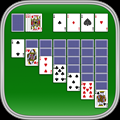
Introduction
Ores are fundamental resources in Minecraft Bedrock Edition, essential for crafting tools, armor, and various useful items that aid in survival and progression. Understanding how and where to find each ore efficiently is vital for long-term success in the game. This Minecraft Bedrock Ore Guide will provide information on the generation, uses, and best methods for locating different ores in your Bedrock world, drawing on the latest Minecraft updates. To know your current Y level in Bedrock Edition, you can turn on coordinates in the game settings. Remember that all ores must be mined with a pickaxe to yield any resources.
Coal
Coal is a very common and important ore. It is essential for crafting torches and campfires and is frequently used as fuel in furnaces. Coal can also be traded with villagers for emeralds. In Minecraft worlds, coal generates in two batches. The first batch spawns evenly from the top of the world (Y320) down to Y136. Another batch also generates between Y0 and Y190 but with reduced air exposure, making strip mining at around Y level 95 a good approach. Additionally, coal can be found in a second range from Y136 to Y256, making mountainous regions at Y level 136 another common location. Deepslate coal ore is also a variant.
Diamond
Diamond is one of the most sought-after ores in Minecraft due to its use in creating strong armor and tools. It is also necessary for duplicating smithing templates and crafting an enchanting table. Unlike many other ores, diamonds generate in only one batch, with reduced air exposure, meaning they are more commonly found while caving than strip mining. This batch generates from Y14 down to the bottom of the world at Y-64. Diamond ores are more common the lower you go, but due to bedrock, strip mining at Y-59 is often recommended. Deepslate diamond ore is also a variant.
Emerald
The main purpose of emerald is to trade with villagers. Although you can also use them to color your armor trims and to craft emerald blocks to power your beacon. Emerald generates only in one batch from the top of the world to Y-16, most commonly at Y232. But you can only find them in mountain biomes, making them rarer than they appear to be on the general ore distribution graph. The best way to find emeralds by mining is between Y levels 4 and 32 in mountain biomes. Emerald ore is one of the rarest ores in the game. Deepslate emerald ore is also a variant. Villages are hotspots for easy Minecraft emerald finds through trading. Keep trading with villagers to get better gear.
Copper
Copper is a relatively new ore that spawns between Y level -6 and Y level 112, with the best level for collection being Y level 48. To further improve your chances of finding copper, look in dripstone caves, as copper ore has a much higher spawn rate in these biomes. Copper is used to craft items like lightning rods and copper trapdoors. Copper ore appears in almost all overworld biomes, offering flexibility in where you can mine. Look out for copper as it often forms in blobs. The versatility of copper makes it valuable for both functional and decorative purposes. Deepslate copper ore is also a variant.
Lapis Lazuli
Lapis lazuli generates in two distinct batches. The first batch is found between Y level -32 and Y level 30, with the most common occurrence around Y level -1. A key characteristic of this batch is that the ores never generate exposed to air, so strip mining is necessary to find them. The second batch generates evenly between Y level -64 and Y level 64, making Y level -1 the overall best level for finding lapis lazuli. Lapis lazuli is used in crafting and enchanting. Deepslate lapis lazuli ore is also a variant. Lapis lazuli is often called Minecraft lapis. It extends to various blue-colored items, enhancing Minecraft’s creative possibilities, and is used to craft blue dye.
Iron
Iron ore is valuable for crafting many useful items, including shields, tools, armor, hoppers, minecarts, and rails. Iron generates in several batches. One batch spawns generally between Y-24 and Y54, most commonly around Y15. Another batch spawns evenly between Y – 63 and Y 64, and large iron veins can generate alongside tuff below Y level zero.
Interestingly, iron also has a third batch spawning in the mountains between Y80 to Y319, most frequent at Y level 232. Setting up a dedicated strip mine can be a good way to gather iron, though iron farms can eventually replace manual mining. Deepslate iron ore is also a variant. Iron is one of the most important resources and a basic resource in Minecraft.
Redstone
Redstone ore has an interesting spawning pattern. It generates between Y – 63 and Y – 32 and becomes more common the lower you go. However, be mindful of bedrock at the very bottom and consider mining around Y – 59. A second batch generates evenly between Y – 63 and Y level -5. Redstone is crucial for creating redstone circuits and various mechanisms. Deepslate redstone ore is also a variant. Redstone’s vast potential boosts your builds and adds to Minecraft’s lively community.
Gold
Gold ore is located between Y-64 and Y32, with the highest concentration at Y – 16. Similar to diamonds and lapis lazuli, gold often generates with reduced air exposure, so strip mining is recommended. A smaller second batch generates evenly at Y – 48 to Y – 64. Notably, in the Badlands biome, gold ore generates much more frequently and across a wider range, from Y32 to Y 256, making the Badlands the most common place to find gold. Gold is used for crafting tools, armor (though less durable), and is essential for trading with piglins in the Nether. Nether gold ore is another variant found in the Nether. Mining nether gold ore with a pickaxe will drop raw gold.
Ancient Debris
Ancient debris is one of the most valuable ores, found in the Nether realm. It is needed to create Netherite and upgrade diamond equipment. The best level to find ancient debris is Y level 16. While it can generate anywhere between Y levels 8 and 119, it is most commonly found in the depths of the Nether. Ancient debris’ frequency peaks at layer 15 and tapers off above and below. You will need a diamond or netherite pickaxe to mine ancient debris.
Nether Quartz
Nether quartz is found in the Nether and is very common, generating between layers 10 and 114, commonly up to layer 120. It is used in crafting various items, including redstone components like observers and daylight detectors, and can also be used in a smithing table to color armor trims white. Nether quartz ore is a distinct ore found in the Nether.
Nether Quartz
Nether gold ore is another ore found exclusively in the Nether. It is common and most frequently found around layer 15, commonly up to layer 95. Mining nether gold ore with a pickaxe will drop raw gold. Nether gold is used for crafting gold ingots and trading with piglins.
Mining Strategies
Besides knowing the best Y levels, there are various mining techniques you can employ to find ores efficiently. These include cave mining and underwater cave mining, which involve exploring naturally generated caves and underwater systems to discover exposed ore veins. Strip and crawl mining is a more systematic approach where you dig long, parallel tunnels with small gaps in between to maximize the area you cover.
Looting chests in generated structures like mineshafts, strongholds, desert temples, and pillager outposts can also yield ores or resources that can be traded for ores. Finally, TNT boring is a more advanced technique that uses explosions to clear large areas quickly, though it can be resource-intensive and potentially destroy ore drops if not done carefully.
Remember that the distribution of ores can be affected by the biome you are in and that updates to Minecraft can sometimes change ore generation patterns. Exploring different biomes and staying informed about the latest game versions will enhance your ore-finding endeavors. Playing on a Minecraft server can also make mining with friends a more enjoyable experience. Consider exploring mods for Minecraft Bedrock Edition, which can introduce new ores, change ore distribution, or add entirely new dimensions to explore for resources.
Biome-Specific Ore Generation
Stony Peaks
Badlands
Previous NextIn Minecraft Bedrock Edition, ore generation varies by biome, affecting how and where players should mine for specific resources. Emeralds are exclusively found in mountain biomes, making them a rare but valuable resource primarily obtained through mining or villager trading. Gold ore, on the other hand, is significantly more abundant in the Badlands biome, where it generates at much higher rates and across a wider Y-level range than in other areas. Understanding these biome-specific distributions allows players to optimize their mining strategies, ensuring they focus on the best locations for finding these valuable ores.
Deepslate Variants
In Minecraft Bedrock Mobile Edition, ore variants appear based on depth and dimension, influencing mining strategies and resource availability.
Deepslate Copper Ore
Deepslate Iron Ore
Deepslate Gold Ore
Deepslate Redstone Ore
Deepslate Diamond Ore
Deepslate Emerald Ore
Deepslate Coal Ore
Previous NextDeepslate ores are a tougher, darker variant of regular ores found below Y=0 in the Overworld, typically within deepslate layers. These ores include coal, iron, copper, gold, redstone, lapis lazuli, diamond, and emerald, all embedded within deepslate blocks. While they drop the same resources as their regular stone-based counterparts, deepslate ores take longer to mine due to their increased hardness. The same type of pickaxe is required to extract them, meaning iron or better for most ores, and diamond or netherite for harder ones like deepslate diamond ore.
Trading Ores and Ore-Related Items
You can trade coal with villagers for emeralds. As mentioned, emeralds are the primary currency for trading with villagers. Trading with villagers can be a valuable way to obtain resources, including ores or items crafted from ores. For example, you can trade with weaponsmith villagers or fletcher villagers who might trade bows or crossbows. Converting zombie villagers back to normal villagers can earn you discounts on trades, making it easier to acquire emeralds.
Finding Ores in Generated Structures
Ores and ore-related items can sometimes be found as loot in chests within various generated structures in Minecraft Bedrock . Exploring these locations can provide valuable resources without extensive mining.
Mineshaft
Mineshafts are underground tunnel systems that often intersect ore veins, making them a great place to find exposed ores like coal, iron, and gold. These structures contain chests that may hold additional resources, including enchanted books and minecart-related items.
Stronghold
Strongholds contain chests, particularly in libraries, which can hold valuable loot like enchanted books. These enchantments, such as Fortune, can improve mining efficiency by increasing ore drops. Strongholds are located using eyes of ender, which are crafted from ender pearls and blaze powder and are essential for reaching the End Portal.
Desert Temple
Desert Temples contain treasure rooms with chests that may include iron, gold, emeralds, and enchanted books. These structures are hidden beneath sand pyramids and require players to carefully navigate around TNT traps.
Pillager Outpost
Pillager Outposts are known for hostile pillagers, but their loot chests can contain iron, crossbows, and other valuable resources. They sometimes generate near villages, making them accessible, though dangerous, locations for resource gathering.
Woodland Mansions
Woodland Mansions are rare and massive structures found in dark forests. They contain chests with valuable items, including enchanted books and ores. Since they are far from spawn, players often use cartographer villagers to obtain woodland explorer maps, which help locate them.
Ancient Cities
Ancient Cities, found deep within deep dark biomes, contain chests with rare loot, including enchanted books, echo shards, and note blocks. These areas are guarded by Wardens, making them dangerous but rewarding exploration sites.
Additional locations include Bastion Remnants in the Nether, which contain gold blocks, ancient debris, and netherite-related items. Trial Chambers, found between Y-level -40 and -20, hold chests with loot, including ominous vaults that require the bad omen effect to unlock. Shipwrecks and Buried Treasure Chests, often located in oceans and beaches, can contain iron, gold, emeralds, and even diamonds. Ruined Portals, scattered throughout the world, provide gold blocks and enchanted tools.
Enchantments for Mining
In Minecraft Bedrock Mobile Edition, enchantments play a crucial role in improving mining efficiency, allowing players to gather more resources with less effort.
By using the right enchantments, players can maximize their mining efficiency, increasing ore yields, improving durability, and speeding up resource collection in Minecraft Bedrock Mobile Edition.
Raw Ores and Smelting
Keep in mind that when you mine most ores, you obtain their raw forms (e.g., raw iron, raw gold, raw copper). These raw ores need to be smelted in a furnace using fuel like coal or wood to obtain the usable ingots. Nether gold ore is an exception, dropping raw gold directly. Ancient debris needs to be smelted in a blast furnace to obtain netherite scraps.
Understanding these additional details about ore distribution, uses, and related game mechanics can further enhance your mining efficiency and overall gameplay in Minecraft Bedrock Edition.
Conclusion
In conclusion, efficiently finding ores and resources in Minecraft Bedrock requires a mix of strategic mining, exploring generated structures, and utilizing villager trades. Ancient debris is best obtained using explosives in the Nether or from bastion chests, though upgrading diamond gear also requires smithing templates.
Understanding ore distribution at different Y levels is essential, as is exploring structures like strongholds, mineshafts, woodland mansions, and bastions, which often contain valuable loot. Villager trades, particularly for emeralds, provide another key way to acquire resources. Using the right tools, such as diamond or netherite pickaxes, and enchantments like Fortune enhances ore collection, while most ores must be smelted to become usable. By combining mining techniques, exploration, and trading, players can efficiently gather every ore and resource in Minecraft Bedrock
If you’re looking for more guides, be sure to explore the website for more tips and tricks. Enjoy your adventure, and happy mining!
Frequently Asked Questions(FAQs)
🍄What tool do I need to mine ores?
At least a stone pickaxe for most; iron or better for Redstone, Diamond, Gold, and others.
🍄Can I smelt ores directly into ingots?
Raw ores (like iron, gold, copper) can be smelted; others like diamond drop usable items directly.
🍄Do ores regenerate?
No—once mined, they don’t come back unless using commands or add-ons.
PrevPreviousMinecraft Bedrock Navigation Guide NextMinecraft Bedrock Enchanting GuideNextAbout the Author
Kyle
Kyle is a passionate gamer and IT professional who enjoys playing across PC, console, and mobile. He thrives in competitive games like Dota 2 and Valorant while also immersing themselves in rich RPG experiences. A devoted fan of the Final Fantasy series, He is captivated by its epic storytelling and breathtaking worlds. He also love the Persona series for its deep RPG mechanics, social simulation, and stylish design. When not working, He spends his free time exploring new games, mastering mechanics, and enjoying every adventure the gaming world has to offer. 0 0 votes Rating Login Please login to comment 0 Comments Inline Feedbacks View all comments












